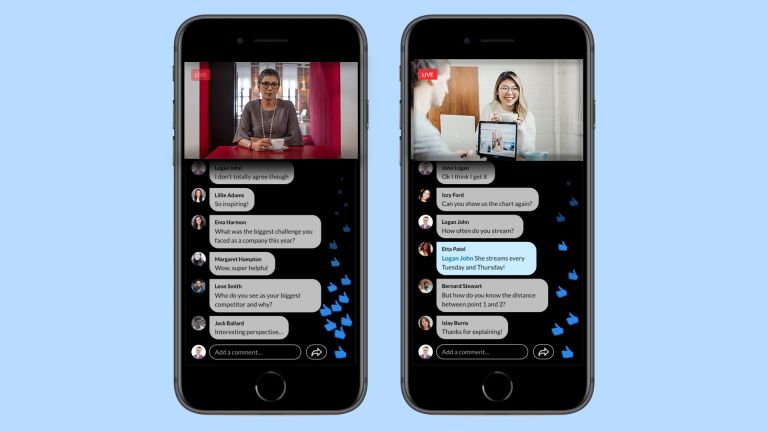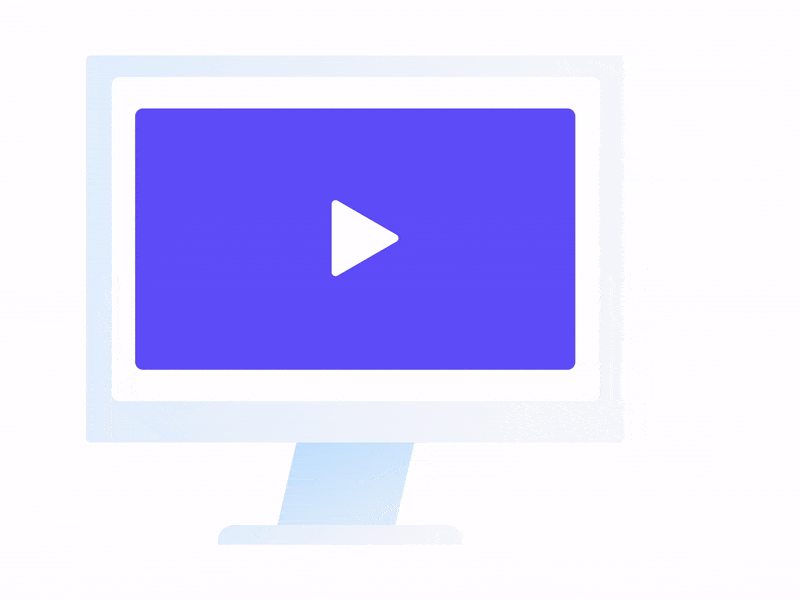It’s been a long time coming, but LinkedIn are finally launching live streaming. While YouTube has had streaming capacity for over a decade, LinkedIn’s streaming service has just entered beta.
It’s big news for B2B marketers because LinkedIn is a behemoth in the world of business marketing, albeit a clunky one that’s often late to the party. Live streaming, once the realm of gamer nerds, is about to become a corporate staple. Here’s what to expect.
Why you should pay attention to LinkedIn Live

Social platforms are always bolting on new features, so why is LinkedIn Live special? There are three main reasons.
- LinkedIn Live opens up a huge audience. There are 500 million users on the platform and they’re all DTB (down to business). No, seriously, they are — the vast majority of B2B social media leads come from LinkedIn. A whopping 80% in fact. Rena, Biteable social media scientist, says: “This is a fact marketers cannot ignore and it’s for this reason LinkedIn can get away with being late to the live streaming party”.
What’s even more compelling is that of the 500 million LinkedIn users, only 3 million actually share content. That’s a big market of lurkers and a great opportunity to stand out.
Video is a rapidly expanding industry. In 2016 it was estimated to be valued at $30bn and that figure is set to double by 2021. Marketers who aren’t already considering video need to pull their fingers out.
- Professionals want professional content. Like all content on LinkedIn, we anticipate LinkedIn Live will be a little more polished than your average Twitch stream or Instagram Live Q&A.
“People are there for a business platform, they’re not there to check out my dog photos. They’re there to grow professionally and to check out what’s going on in the industry” says Biteable marketing strategist Gerard Doyle.
There’s value in showing a little respect and not being super-casual.
- Gerard Doyle, Marketing Strategist
Hot tip for aspiring streamers: An easy way to add a bit of a spit shine to your live stream is with intro and outro videos. Uncoincidentally, we’ve made a few templates and you can edit them here (Biteable’s got your back, live stream newbies).
When and how to use LinkedIn Live
The prospect of live streaming content may be intimidating for some businesses. Live streaming can seem a little too warts-and-all for a polished organization with a tight grip on messaging and brand presentation. But now’s the time to pivot.
We’ve been moving towards a live video culture for a while, starting, as always, with the B2C market. In 2016, Gwen Stefani snatched headlines with the first-ever live music video aired as a four-minute ad. It was made in collaboration with Target (and a crew of 250) and while it was cute, classic Gwen, the secret sauce was definitely the live element. Punters love one-shot feats (like entire movies shot in one take).
It was risky, but the benefits vastly outweigh the risks. So why should B2B business give a hoot about live streaming?
Live video is incredibly engaging — your audience is along for the ride and can feel the highs and lows. Edited videos have to work harder to create the same emotional engagement and can often feel sanitized — the outcome is already known, so there’s no excitement.
On a live stream, anything can happen and it’s intoxicating to think you’ll be able to watch it go wrong (or right) in real time. Use this to your advantage when you want to generate a bit of excitement and you’ll reap the rewards. Some studies show that users spend up to 8 times longer with live video than video-on-demand (prerecorded video). And there are other perks too.

Gerard Doyle notes that even with B2Bers, the live element also makes your audience a little more forgiving of slip-ups in a way that’s not permissible in edited videos. “I like to think that live will give us the freedom to make a few more mistakes, be a bit less polished and more real. You don’t have to produce perfectly edited, formatted, crisp, clean videos. It can be a little bit jumpy, you can make a few mistakes, a few misspoken words, and people forgive because they go ‘That’s alright, it’s live’.”
Matt Whyatt, the CEO of Velocity Selling, takes it one step further and actually encourages LinkedIn Live streamers to be more human and generate leads with non-automated, high touch responses.
If somebody has gone ahead and liked your video, message them on LinkedIn, either through comments or privately, and say ‘Hey, thanks for liking my video!’ I know that sounds like a lot of hard work, but if you’re getting 20-30 likes, send that message and if they’re in your target market, people are going to respond. It’s not B2B or B2C, it’s H2H: human to human.
- Matt Whyatt, CEO of Velocity Selling
And the cherry on top is that more comments mark your video as more relevant than competing content, pushing it up the ranks.
Further, while live streaming, you’re easily able to interact with your audience. We don’t have an indication of what type of interactive mechanisms LinkedIn Live will offer, but early UI images show reacts and comments similar to Facebook’s live stream service. A good live streamer will play into those engagement mechanisms creatively — asking for reactions as a poll, asking for opinions in the comments, and even responding to your commenters by name.
How to get ready for the LinkedIn Live rollout
Don’t wait to see how the LinkedIn Live dust settles — start planning your live stream strategy now. Why the rush? Because, as we’ve seen with Facebook, LinkedIn will most likely reward early adopters of the live feature and give them a reach boost.
“If you’re able to start engaging people in the comments while you’re live, you’ve got to imagine that’s going to translate to a boost on LinkedIn,” says Gerard.
What content would suit a live stream? Not everything, but more than you think. You may already be producing good live stream content without knowing it.
Here’s a short checklist to get you started.
1. Why should people watch your live stream?
Remember that all videos, even live streams, have to be offering the viewer value. The average length of a video on the internet is 2 minutes and 7 seconds, so if your live stream goes for longer, and it will, structure it to add value and engagement at intervals. This could be as simple as changing the composition of the framing (focusing on one speaker then another), moving around the space (if possible), and keeping the commentary snappy.
2. Who is your audience?
The right person for your live stream is not necessarily the boss — it’s whoever has the most to say and can deliver a message with charisma. “The person who can add value [should be in front of the camera],” Matt says. “It’s about humanizing the people in the business, so if you’ve got a tech person but they’ve got something to say — put it out there. It’s about making sure the value is there.”
3. What kind of content do they want?
There are some very specific types of content that will go well on a live stream. Hot tip: don’t repurpose Facebook and Instagram content, remember that LinkedIn is a distinct audience with a business focus.
- Educational: Q&As, product walkthroughs, and how-to sessions can all be live streamed. Anything that works in a one-to-one format can work as a one-to-many.
- Focus groups: Present your ideas and ask for instant feedback.
- Events: Conferences, awards night, presentations, seminars — whatever events already have an element of performance can be live streamed.
- BTS: Behind-the-scenes of said events can also be a great way to show your brand’s personality in a professional context.
Good luck and good streaming.

Create videos that drive action
Activate your customers or team with impactful, on-brand videos.
